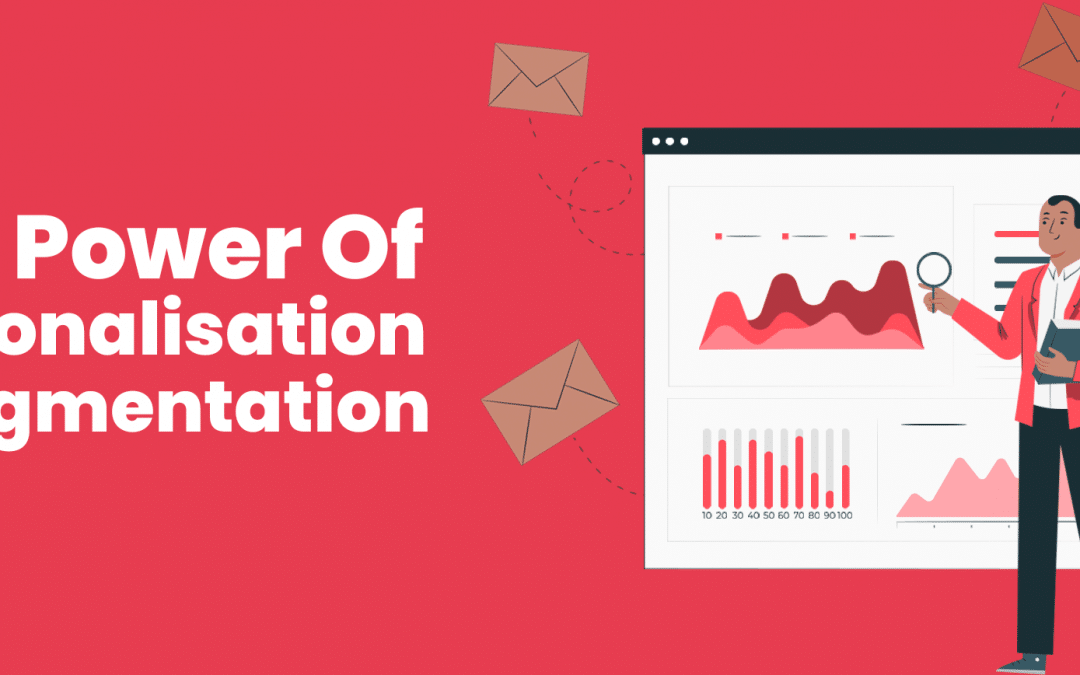The days of ‘one-size-fits-all’ marketing are long gone. Trigger-happy email campaigns blasted out to an entire database are doomed to fail. Why? Because we all want to be treated like an individual. We welcome content that is relevant to our business, our lives and can add value or solve a challenge we are trying to overcome.
You could send out a beautifully designed email with well-written content – but if it isn’t relevant to your audience, or they don’t believe you are addressing them personally, then they will simply hit the ‘unsubscribe button’. And that benefits no one.
By using personalisation and segmentation intelligently, 74% of marketers have reported an increase in customer engagement. But before sending your email campaign, you must understand the difference between personalisation and segmentation.
Get your FREE Growth Audit today!
Uncover the hidden areas of opportunity in your marketing and sales funnels.
See how you stack up against industry best practices.
See where you can improve your conversion rates and sell more.
What is email personalisation?
When a new subscriber signs up to your email campaigns or enters your sales funnel via a lead form, they voluntarily share certain elements of their data with you. This could be their name, the company they work for or their postal address.
Smart marketers leverage this information to add a personal touch to their email marketing campaigns; after all ‘Hello Bob, Our team is in the Bradford area and thought we could hook up’ is much more likely to elicit a response than ‘Hello Valued Customer, our team are in your area and thought we could hook up’!
The stats speak for themselves. By utilising personalisation in email subject lines, marketers can expect to see open rates increase by an average of 26%.
What is segmentation?
If you have an email database that is simply one big list of subscribers and leads, then you’re not making the most of the valuable data you hold about your potential customers.
Email segmentation breaks down your list into meaningful sub-divisions based on a host of different criteria. By speaking to a smaller portion of your audience and providing relevant information based on the data you’ve gathered, your email campaign has a much better chance of success. The alternative is to blast the same message out to everyone, which the majority of your subscribers will disregard.
At Tribecto, we practise what we preach. There are three main services we offer:
Each of these services need very different and targeted messaging. We don’t want to turn off a customer who is interested in getting advice on their email marketing campaigns by sending them a detailed communication about our custom integrations service.
So how do we ensure we are getting the right messages to our clients? We use email segmentation.
The forms on our website are designed to capture the key pieces of information we need in order to place potential customers into the correct area of our sales funnel.
We collect the data we need to contact them (and personalise our responses) but there is also a simple drop-down menu asking them to select the area in which they need our help. This acts as the trigger for us to place them in the correct segment of our database and begin the nurturing sequence of emails that will engage, delight and add value to their own business.

How should I segment my email list?
How you segment you list largely depends on your objectives.
It could be based at industry level. For example, we have a client who produces software solutions for the art industry. Whilst the product remains the same, the way businesses use the software is very different. They choose to portion their list by industry and tailor their messaging accordingly so that art galleries learn about the benefits the software can bring in a different way than an art logistics specialist would.
Or you could choose to split your list by product. By asking the right qualifying questions on your lead form, you can ascertain which of your products would best suit the customer and nurture them accordingly. We work with a commercial flooring specialist and have helped them to slice their database by flooring products, allowing them to better communicate the benefits of each product to the correct audience.
The way you communicate with each audience is very important. Segmentation will only work if the content you share is relevant, valuable or solves a challenge or issue the customer is facing. Maybe you could adapt the tone and language of your content to work for different segments, or offer a customer success story or case study that closely matches the needs of your audience?
By thinking about smart ways to divide your email list, you can begin to plan your funnels and customer messaging more effectively and watch those all-important engagement levels get a boost.
If you are looking to learn how to get more from your email marketing strategy, get in touch today and we’ll be happy to advise you on email personalisation and segmentation techniques and help you to create successful automated email nurturing sequences for your business.
Join us on YouTube to get the latest tips and tricks to maximise your email marketing efforts.

